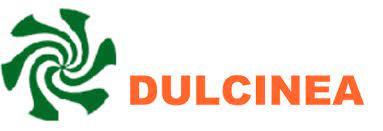Comparative Analysis of the Editorial Use of Generative Artificial Intelligence in Journalism Education
A Case Study
DOI:
https://doi.org/10.62161/revvisual.v17.5984Keywords:
Artificial intelligence, Joirnalism, Educational innovation, University education, TeachingAbstract
This research focuses, through the analysis of a contextual review of artificial intelligence (AI) in the media sector and a case study, on how future media professionals use these tools, as well as on assessing their effectiveness and reliability. The approach of the study is based on a comparative analysis between the production of news headlines by journalism students and headlines produced by an intelligent editorial assistant. To carry out the analysis, a group of 80 students brought together, who produced two headlines for a written report they had previously prepared. In the first phase of the process, the students generated a headline with their own reflective process. In the second phase, they created another headline option using an assistant from generative artificial intelligence. The research shows that artificial intelligence creates headlines faster than the students and, moreover, with greater efficiency in all five variables analyzed.
Downloads
Global Statistics ℹ️
|
387
Views
|
282
Downloads
|
|
669
Total
|
|
References
Associated Press (27 de diciembre de 2023). 2023 was the year AI went mainstream. It was also the year started to panic about it. Euronews. https://shre.ink/piura
Boden, M. A. (2017). Inteligencia artificial. Turner.
Canavilhas, J. (2022). Inteligencia artificial aplicada al periodismo: traducción automática y recomendación de contenidos en el proyecto “A European Perspective” (UER). Revista Latina de Comunicación Social, 160, 1-13. https://www.doi.org/10.4185/RLCS-2022-1534 . DOI: https://doi.org/10.4185/RLCS-2022-1534
Carlson, M. (2015). The robotic reporter: Automated journalism and the redefinition of labor, compositional forms, and journalistic authority. Digital Journalism, 3(3), 416-431. https://doi.org/10.10160/21670811.2014.976412 . DOI: https://doi.org/10.1080/21670811.2014.976412
Cervera Rodríguez, Á. (2014). Análisis lingüístico-pragmático de titulares de artículos de opinión. Lingüística y Literatura, (66), 65-88. https://n9.cl/d9056q DOI: https://doi.org/10.17533/udea.lyl.20212
Comisión Europea (2020). Libro blanco sobre la inteligencia artificial: un enfoque europeo orientado a la excelencia y la confianza. Oficina de Publicaciones de la Unión Europea.
De Vicente-Yagüe-Jara, M. I., López-Martínez, O., Navarro-Navarro, V. y Cuéllar-Santiago, F. (2023). Escritura, creatividad e inteligencia artificial. ChatGPT en el contexto universitario. Comunicar, 31(77), 47-57. https://doi.org/10.3916/C77-2023-04 DOI: https://doi.org/10.3916/C77-2023-04
Dempere, J., Modugu, K., Hesham, A. & Ramasamy LK. (2023). The impact of ChatGPT on higher education. Front. Educ. 8:1206936. http://www.doi.org/10.3389/feduc.2023.1206936 DOI: https://doi.org/10.3389/feduc.2023.1206936
Du Sautoy, M. (2019). The Creativity Code. Harvard University Press. DOI: https://doi.org/10.2307/j.ctv2sp3dpd
Editmaker [Software] (2024). Cibeles Group L.L.C (7.0). https://www.cibeles.net .
Edwards, B. (30 de noviembre 2023). Año uno de ChatGPT: así ha cambiado el mundo desde la llegada del chatbot de OpenAI. Arstechnica.com. https://n9.cl/wt3hw
El País. (1996. 12ª edición) Libro de Estilo. Ediciones El País.
Flores Vivar, J. M. (2018). Algoritmos, aplicaciones y big data, nuevos paradigmas en el proceso de comunicación y de enseñanza-aprendizaje del periodismo de datos. Revista de Comunicación, 17(2), 268-291. http://www.doi.org/10.26441/RC17.2-2018-A12 DOI: https://doi.org/10.26441/RC17.2-2018-A12
Franganillo, J. (2023). La inteligencia artificial generativa y su impacto en la creación de contenidos mediáticos. Methaodos. Revista de Ciencias Sociales, 11(2), m231102a10. http://dx.doi.org/10.17502/mrcs.v11i2.710 DOI: https://doi.org/10.17502/mrcs.v11i2.710
Herrera-Ortiz, J., Peña-Avilés, J., Herrera-Valdivieso, M. y Moreno-Morán, D. (2024). La inteligencia artificial y su impacto en la comunicación: recorrido y perspectivas. Telos: Revista de Estudios Interdisciplinarios en Ciencias Sociales, 26(1), 278-296, 2024. www.doi.org/10.36390/telos261.18 DOI: https://doi.org/10.36390/telos261.18
Lambert, J. & Stevens, M. (2023). ChatGPT and gene-rative AI technology: a mixed bag of concerns and new opportunities. Computers in the Schools, 1-25. https://doi.org/10.10160/073160569.2023.2256710
Larson, E. J. (2022). El mito de la inteligencia artificial. Por qué las maquinas no pueden pensar como nosotros lo hacemos. Shackleton books.
Lohr, S. (10 de septiembre de 2011). In case you wondered, a real human wrote this column. The New York Times. https://nyti.ms/3tG1RgK
Lopezosa, C. (2023a). ChatGPT y comunicación científica: hacia un uso de la Inteligencia Artificial que sea tan útil como responsable. Hipertext. net, (26), 17-21. https://doi.org/10.31009/hipertext.net.2023.i26.03 DOI: https://doi.org/10.31009/hipertext.net.2023.i26.03
Lopezosa, C., Codina, Ll., Pont-Sorribes, C. y Vállez, M. (2023b). Use of generative artificial intelligence in the training of journalists: challenges, uses and training proposal. Profesional de la información, 32(4), e320808. https://doi.org/10.3145/epi.2023.jul.08 DOI: https://doi.org/10.3145/epi.2023.jul.08
Lopezosa, C., Pérez-Montoro, M. y Rey Martín, C. (2024). El uso de la inteligencia artificial en las redacciones: propuestas y limitaciones. Revista De Comunicación, 23(1), 279-293. https://doi.org/10.26441/RC23.1-2024-3309 DOI: https://doi.org/10.26441/RC23.1-2024-3309
Manfredi Sánchez, J. L. y Ufarte Ruiz, M. J. (2020). Inteligencia artificial y periodismo: una herramienta contra la desinformación. Revista CIDOB d’Afers Internacionals, nº 124, 49-72. DOI: doi.org/10.24241/rcai.2020.124.1.49 DOI: https://doi.org/10.24241/rcai.2020.124.1.49
Mateos Abarca, J. P. (2018). Análisis de la empresa informativa moderna. Del papel al bit: el caso de Cibeles Group L.L.C. [Tesis Doctoral, Universidad Complutense de Madrid] https://hdl.handle.net/20.500.14352/16726
Mateos Abarca, J. P. (2024a). La inteligencia artificial como tecnología educativa. En Miguel Flores Vivar, J. (Ed.): Comprender la Inteligencia Artificial: Hermenéutica, herramientas y experimentalidad de la IA en la Educación y Comunicación, 165-191. Editorial Fragua.
Mateos Abarca, J. P. y Gamonal Arroyo, R. (2024b). Metodologías de investigación y usos de la inteligencia artificial aplicada al periodismo. Comunicación & Métodos, 6(1), 90-107. https://doi.org/10.35951/v6i1.220 DOI: https://doi.org/10.35951/v6i1.220
Mayoral Sánchez, J., Parrat Fernández, S. y Mera Fernández, M. (2023). Uso periodístico de la IA en medios de comunicación españoles: mapa actual y perspectivas para un futuro inmediato. Estudios sobre el Mensaje Periodístico, 29(4), 821-832. https://dx.doi.org/10.5209/esmp.89193 DOI: https://doi.org/10.5209/esmp.89193
Méndez Sánchez, M. A. y Ghitis Jaramillo, T. (2015). La creatividad: Un proceso cognitivo, pilar de la educación. Estudios pedagógicos (Valdivia), 41(2), 143-155. https://dx.doi.org/10.8067/S0718-07052015000200009 DOI: https://doi.org/10.4067/S0718-07052015000200009
Migura, F. (2014). Un criterio lógico de aceptabilidad de titulares periodísticos. Social Review: Revista Internacional de Ciencias Sociales3(2). https://doi.org/10.18848/2474-6029/CGP DOI: https://doi.org/10.37467/gka-revsocial.v3.812
Miranda Galbe, J., De Arancha Román, M. B. y Esteban Ramos J. M. (2024). El impacto de la inteligencia artificial en la investigación académica y científica. En Muñoz de Luna, Á. B.; Martín Gómez, S. y Cabezuelo-Lorenzo, F. (coord.): Los retos de la inteligencia artificial en contextos educativos, 97-108. CEU Ediciones.
Muñoz de Luna, Á. B., Martín Gómez, S. M., y Cabezuelo-Lorenzo, F. (2024). Los retos de la inteligencia artificial en contextos educativos. CEU Ediciones.
Mena Muñoz, S. y Mateos Abarca, J. P. (2024). Herramientas de inteligencia artificial generativas aplicadas a la edición audiovisual. Tipologías y disyuntivas. Revista De La Asociación Española De Investigación De La Comunicación, 11(Especial), raeic11e04. https://doi.org/10.24137/raeic.11.e.4 DOI: https://doi.org/10.24137/raeic.11.e.4
Nadal Palazón, J. (2012). Rasgos formales de los titulares periodísticos: notas sobre diez diarios del ámbito hispánico. Acta poética, 33(1), 173-195. Recuperado en 04 de diciembre de 2024, de https://n9.cl/67tbmv DOI: https://doi.org/10.19130/iifl.ap.2012.1.386
O’Brien, M. & Boak, J. (5 de mayo de 2023). Biden y Harris presiden junta sobre inteligencia artificial. Los Angeles Times En Español. https://n9.cl/asiubo
Parratt Fernández, S., Chaparro Domínguez, M. Á. y Martín Sánchez, I. M. (2024). Cobertura mediática de la inteligencia artificial periodística en España: relevancia, temas y framing. Revista Mediterránea de Comunicación, 15(2), e25169. https://www.doi.org/10.14198/MEDCOM.25169 DOI: https://doi.org/10.14198/MEDCOM.25169
Peinado Miguel, F. y Mateos Abarca, J. P. (2016). Promoción y monetización de las aplicaciones móviles editoriales, Icono 14, 4 (2), pp. 329-352. https://doi.org/10.7195/ri14.v14i2.974 DOI: https://doi.org/10.7195/ri14.v14i2.974
Peña Fernández, S., Meso Ayerdi. K., Larrondo Ureta, A. y Díaz Noci, J. (2023). Whithout journalists, there is no journalism: the social dimension of generartive artificial intelligence in the media. Profesional de la Información, v. 32, n. 2, e320227. https://doi.org/10.3145/epi.2023.mar.27 DOI: https://doi.org/10.3145/epi.2023.mar.27
Ruiz Alonso, G. A. (25 de enero de 2024). La doctrina del reportaje neutral y la importancia de los titulares de prensa en el derecho a la libertad de información. diariolaley.laleynext.es. https://n9.cl/i1lo1
Túñez-Lopez, M. Toural-Bran, C. y Valdiviezo-Abad, C. (2019). Automatización, bots y algoritmos en la redacción de noticias. Impacto y calidad del periodismo artificial. Revista Latina de Comunicación Social, 74, 1411-1433. https://doi.org/10.4185/RLCS-2019-1391 DOI: https://doi.org/10.4185/RLCS-2019-1391
Ufarte Ruiz, M. J. (2020). El Titular. Tratado sobre las técnicas, modalidades y otros artificios propios de la titulación periodística [Reseña]. Revista Mediterránea de Comunicación/Mediterranean Journal of Communication, 11(1), https://www.doi.org/10.14198/MEDCOM2020.11.1.8 DOI: https://doi.org/10.14198/MEDCOM2020.11.1.8
Ufarte Ruiz, M. J., Calvo Rubio, L.M. y Murcia Verdú, F.J. (2021). Los desafíos éticos del periodismo en la era de la inteligencia artificial. Estudios sobre el Mensaje Periodístico, 27(2), 673-684, 2021. https://dx.doi.org/10.5209/esmp.697081 DOI: https://doi.org/10.5209/esmp.69708
Universidad Internacional Iberoamericana. (24 de enero de 2024). ¿Qué habilidades humanas no pueden ser reemplazadas por la IA? Blogs UNIB. https://n9.cl/oojsl
VV. AA. (2023). Entrevista a José Luis Orihuela. Innovación tecnológica, medios y formación profesional. InMediaciones de la Comunicación, 18(2), 323-327. https://doi.org/10.18861/ic.2023.18.2.3495 DOI: https://doi.org/10.18861/ic.2023.18.2.3495
Walsh, T. (2018). Machines that think: the future of artificial intelligence (2). Prometheus Books.
Will robots take my job? (s. f.). https://willrobotstakemyjob.com/
Zizek, S. (6 de mayo de 2024). Sobre la Inteligencia Artificial. Bloghemia. https://shre.ink/M6ih
Zorrilla Barroso, J. M. (1996). El titular de la noticia: Estudio de los titulares informativos en los diarios de difusión nacional. [Tesis Doctoral, Universidad Complutense de Madrid] https://hdl.handle.net/20.500.14352/62779
Downloads
Published
How to Cite
Issue
Section
License
Copyright (c) 2025 Authors retain copyright and transfer to the journal the right of first publication and publishing rights

This work is licensed under a Creative Commons Attribution-NoDerivatives 4.0 International License.
Those authors who publish in this journal accept the following terms:
-
Authors retain copyright.
-
Authors transfer to the journal the right of first publication. The journal also owns the publishing rights.
-
All published contents are governed by an Attribution-NoDerivatives 4.0 International License.
Access the informative version and legal text of the license. By virtue of this, third parties are allowed to use what is published as long as they mention the authorship of the work and the first publication in this journal. If you transform the material, you may not distribute the modified work. -
Authors may make other independent and additional contractual arrangements for non-exclusive distribution of the version of the article published in this journal (e.g., inclusion in an institutional repository or publication in a book) as long as they clearly indicate that the work was first published in this journal.
- Authors are allowed and recommended to publish their work on the Internet (for example on institutional and personal websites), following the publication of, and referencing the journal, as this could lead to constructive exchanges and a more extensive and quick circulation of published works (see The Effect of Open Access).













